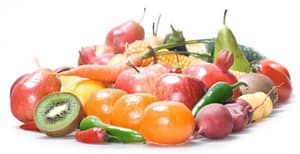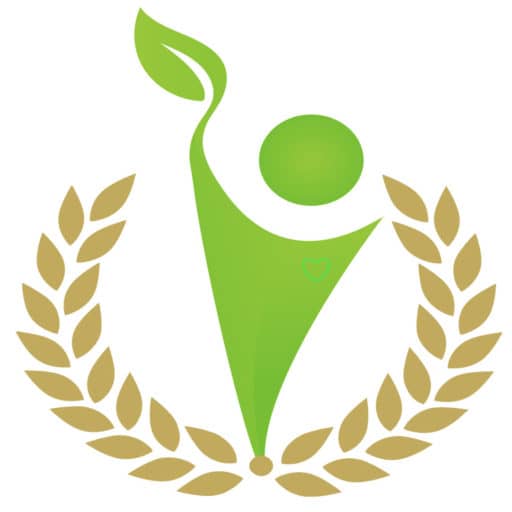[grwebform url=”https://app.getresponse.com/view_webform_v2.js?u=wfNAY&webforms_id=57753701″ css=”on” center=”off” center_margin=”200″/]
What is a Biohacking Diet?
A biohacking diet is a type of nutrition plan that focuses on optimizing the body’s performance. This relatively new approach to wellness emphasizes the use of diet, exercise, supplements, and other lifestyle interventions to “hack” the body’s biology and achieve optimal results. The goal of biohacking is to improve energy levels, reduce inflammation, and promote healing.
Tracking diet with technology
If you’re interested in starting a biohacking diet, there are a few key measurements you’ll need to take first. First, you’ll need to know your current weight and body fat percentage. You can use a scale at home or go to a local gym or health club to have this done. You’ll also need to take measurements of your waist, hips, and thighs. This will give you an idea of where you’re starting from and how your body changes over time.
BMR calculators
Another measurement that is helpful is determining your basal metabolic rate (BMR). This is the number of calories your body burns at rest. There are online calculators for this parameter. Next, it is worth recording a score, out of ten, for your energy levels and your gut health. To measure your gut health, have a think about how regularly you have bowel movements; how often you have abdominal discomfort and how often you have wind, bloating or cramps. Finally, it is worth finding out your blood pressure, cholesterol and blood sugar levels. These tests will be done by your doctor. Once you have these key measurements, you can begin to bio hack your diet.
When it comes to diet and nutrition, there’s no one-size-fits-all approach. But thanks to the increasing popularity of biohacking, there are now more tools than ever to help people customize their diet. And while some biohackers go to extreme lengths (like injecting themselves with hormones or implantable devices), others take a more low-tech approach, using apps and other digital tools to track their progress and make tweaks as needed.
Digital food scale
One such tool is a digital, food scale. This is used to measure portion sizes and track calorie intake with accuracy. It can be as simple as a scale that only weighs food, or there are scales that have additional functions to enable the bio hacker to track accurate nutritional information.
Bodyweight scale

Calorie tracking app
There are a few apps that can be particularly helpful. MyFitnessPal is a comprehensive calorie tracking app that can help you make sure you’re eating the right amount of calories for your goals. The free version is adequate, but if you want to track specific nutrients, there is a small monthly subscription cost.
Fooducate
Another great app for biohacking your diet is Fooducate. This app gives you information on the nutritional value of the food you’re eating, as well as information on how the food was produced. This can be helpful in making sure you’re getting the most nutrient-dense foods possible. Both of these apps help to make you more aware of what you are eating and to keep you on track and accountable.
Noom
Another app that helps users change their eating habits is Noom. What sets Noom apart from other programs is its focus on bio hacking. Bio hacking is the process of using scientific knowledge to optimize your health and performance. Noom employs bio hacking techniques to help users make better food choices and eat healthier. For example, the app uses a colour-coded system to label foods as green (healthy), yellow (okay in moderation), or red (unhealthy).
This system makes it easy for users to identify healthy foods and make better choices. In addition, Noom provides educational articles and videos on topics like portion control and nutrition. By helping the user bio hack their diet, Noom provides a comprehensive approach to diet and nutrition that can lead to sustainable results.
Biohacking diets are more about well-being, health and longevity than losing weight. Therefore, a bio hacking diet includes foods that are high in nutrients and antioxidants, as well as those that support gut health. Some common biohacking foods include whole, unprocessed foods, bone broth, fermented foods, and omega-3 rich foods. In addition to nourishing the body with healthy food choices, a biohacking diet also focuses on reducing stress and exposure to toxins. By following a biohacking diet, you can expect to feel more energized, focused, and overall healthier.
Start your biohacking diet by following these tips:
It’s not surprising that biohackers want to create and follow a healthy diet. Our website has a section on Anti-Aging, and guess what, there is a article on Foods to Help the Anti-Aging Process.
Eat nutrient-dense foods

Protein is essential for building muscles, repairing tissue, and maintaining a healthy metabolism (6). To get the most out of protein, it’s important to choose high-quality sources such as pasture- raised, grass-fed beef, line-caught, wild fish, and free-range poultry.
Another important component of a biohacking diet are healthy fats. They provide energy, support cell growth, and help absorb fat-soluble vitamins. Good sources of healthy fats include avocados, oily fish, olive oil, nuts, and seeds.
Leafy greens are packed with nutrients that support overall health, including vitamins, minerals, and antioxidants. Some of the best leafy greens for biohacking include spinach, kale, broccoli and Swiss chard.
Fermented foods are rich in probiotics, which are beneficial bacteria that support gut health. Fermented foods such as yogurt, kimchi, kefir and sauerkraut promote a healthy balance of gut bacteria, which can improve digestion, boost immunity, and even improve mental health.
Avoid toxins
A biohacking diet limits exposure to toxins. One of the best ways to avoid toxins is to eat organic food. Organic food is grown without the use of pesticides, herbicides, or other harmful chemicals. It is also free of genetically modified organisms (GMOs), which have been linked to a number of health problems. If you can’t afford organic food, such as fruit and vegetables, the next best option is to thoroughly wash them using baking soda and plenty of water.
Another way to reduce toxin exposure is to filter water. Unfortunately, household table-top filters don’t remove all the ‘nasties’ such as polyfluoroalkyl substances. Depending on how dedicated you are to biohacking your drinking water and how deep your pockets are, it is worth considering an under-sink, two-stage filter, which is much more effective at removing all toxins and chemicals.
Stay hydrated
Drinking water is essential for our health. It helps to regulate body temperature, lubricate joints, and get rid of waste products, through urination and perspiration. Water is also a key component of many of the chemical reactions that take place in our bodies, and it helps transport nutrients and oxygen to our cells.
As a result, it’s important to make sure we stay hydrated by drinking enough water every day. For most people, that means aiming for eight 8-ounce glasses of water per day. However, there are a few different factors that can affect how much water we need to drink, including our activity level, the climate we live in, and our overall health.
For optimum hydration, it is important to make sure that the water you drink contains electrolytes. Electrolytes are minerals that conduct electricity in our bodies, controlling blood pressure, muscle movement and fluid balance. The most common electrolytes are sodium, potassium, chloride, and bicarbonate. Simply dissolving a few crystals of Himalayan salt is a great way to bio hack your water and add these beneficial minerals.
Use supplements
Biohackers believe in supplementing the diet with nutrients that are difficult to obtain from food alone. Some of the most popular supplements to bio hack the diet include omega-3 fatty acids, magnesium, probiotics, and green tea extract.
Omega-3 fatty acids are known for their anti-inflammatory properties and are often taken to reduce chronic conditions, such as heart disease, boost brain health and keep cell membranes healthy. Magnesium is another popular supplement. It is involved in over 300 biochemical reactions in the body and can help to improve energy levels, mood, and sleep. Probiotics are live bacteria that are beneficial for gut health. If your diet doesn’t include fermented foods, it is important to top up the “friendly” bacteria in the gut to support the immune system. Other popular supplements with bio hackers are amino acids and enzymes.
Enzymes are important for many different bodily functions, including digestion, metabolism, and immunity. Biohackers take these to help optimize digestion and absorption of nutrients. Amino acids are the building blocks of protein and are essential for our bodies to function properly. For this reason, bio hackers often take amino acids as supplements, especially if they are vegetarian. Without enough enzymes and amino acids, our health would suffer. Therefore, it is clear that they are an important part of a healthy diet.
Other supplements that biohackers take are called nootropics. These focus specifically on improving brain health, function and memory. An important ingredient included in many of these supplements, is the neurotransmitter acetylcholine. A building block for acetylcholine is the nutrient choline, found primarily in egg yolks. Choline plays a part in boosting memory, slowing dementia, reducing fatigue, the production of DNA and improving language, logic, learning and computational ability.
Conclusion
By following these tips, you can start your journey to improved health and vitality today. Contact a biohacking coach or nutritionist to learn more about how you can optimize your diet to live your best life. If you any questions about supplements or lifestyle, please visit your physician for consultation.
For our article on nootropics, click here .
If you would like to visit the Noon site, click here .
[grwebform url=”https://app.getresponse.com/view_webform_v2.js?u=wfNAY&webforms_id=57753701″ css=”on” center=”off” center_margin=”200″/]

